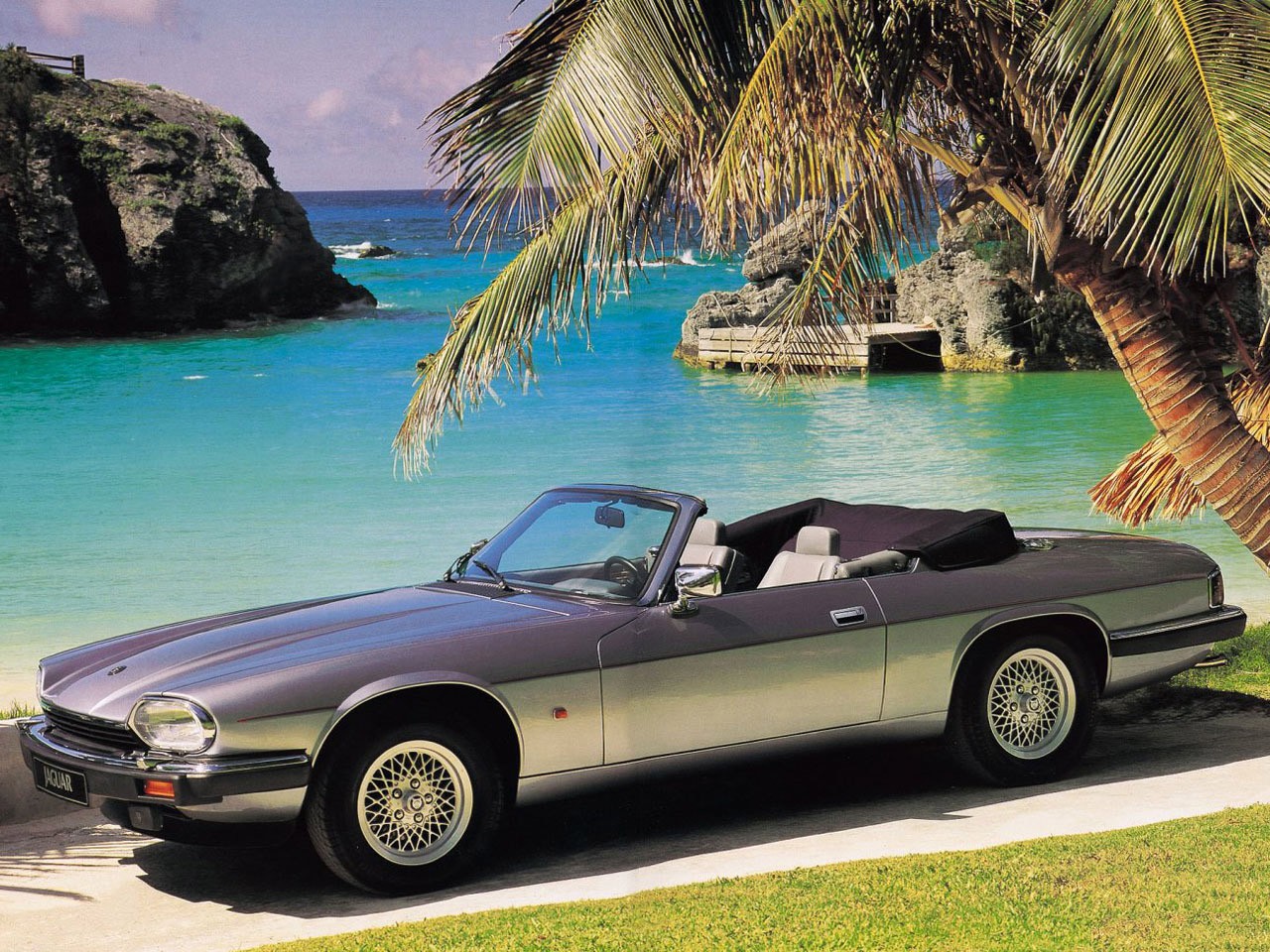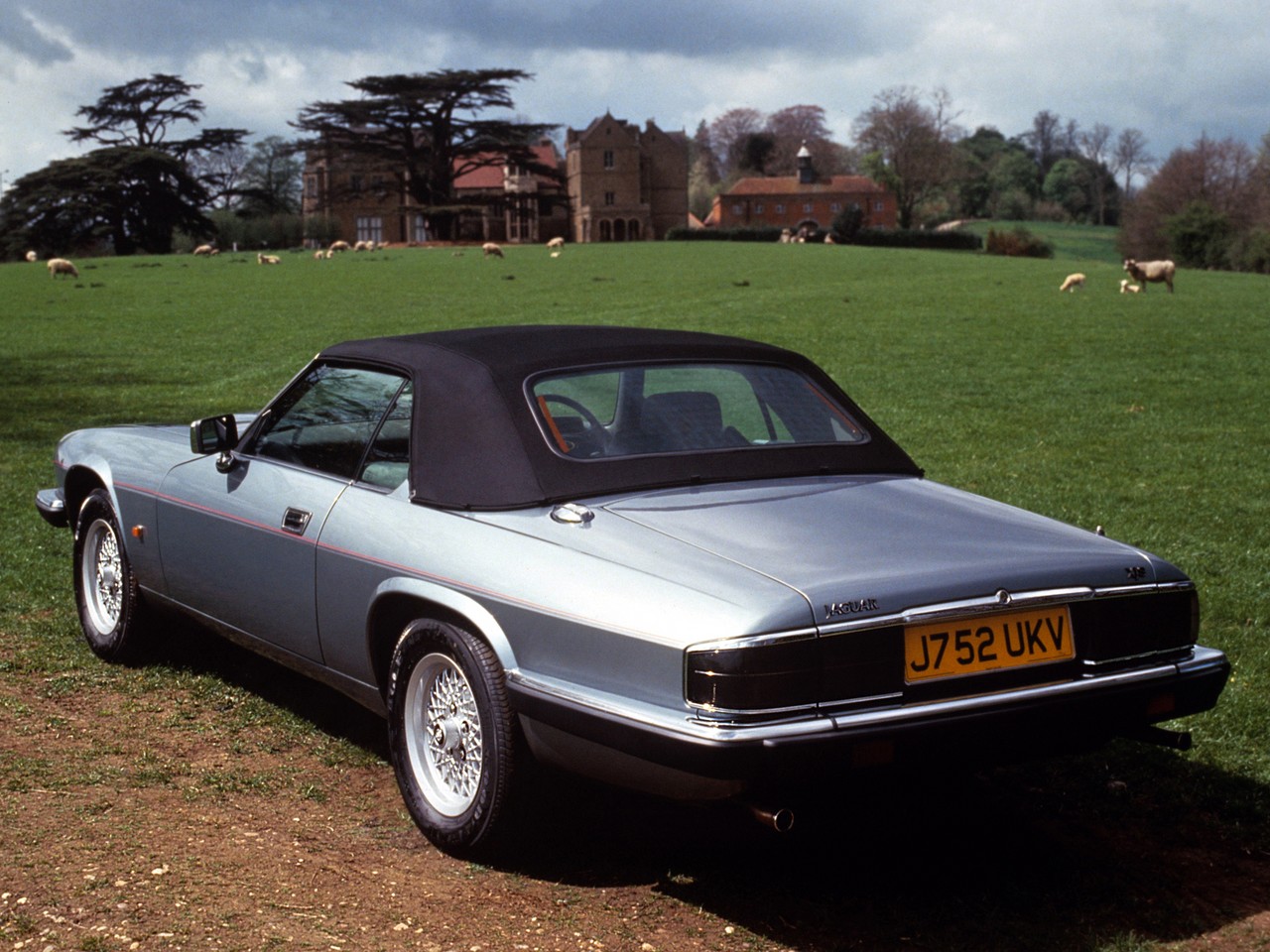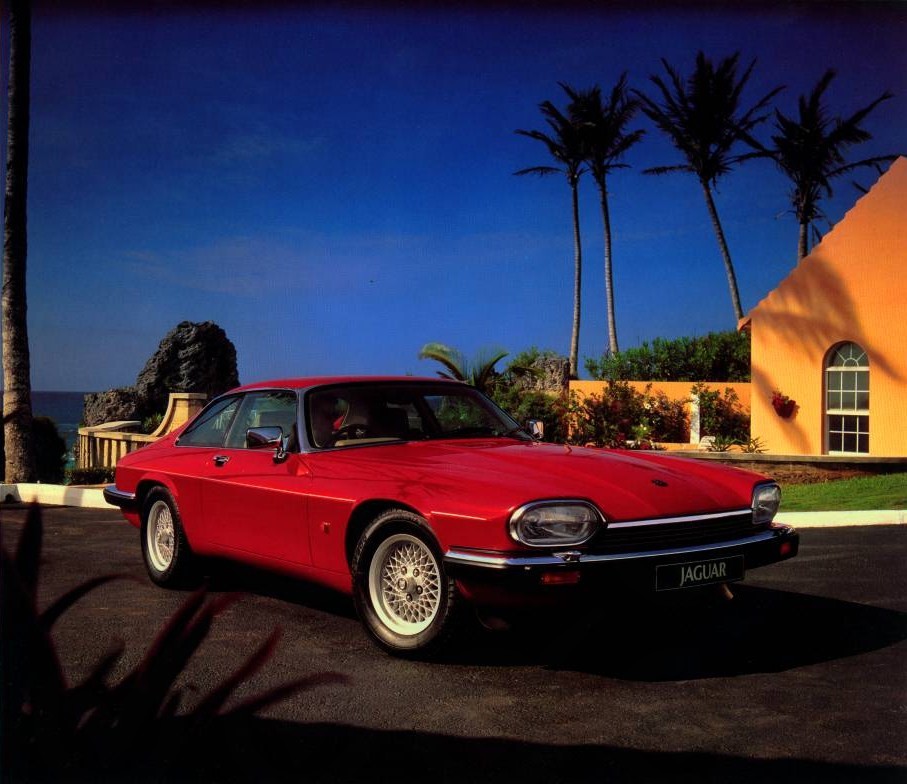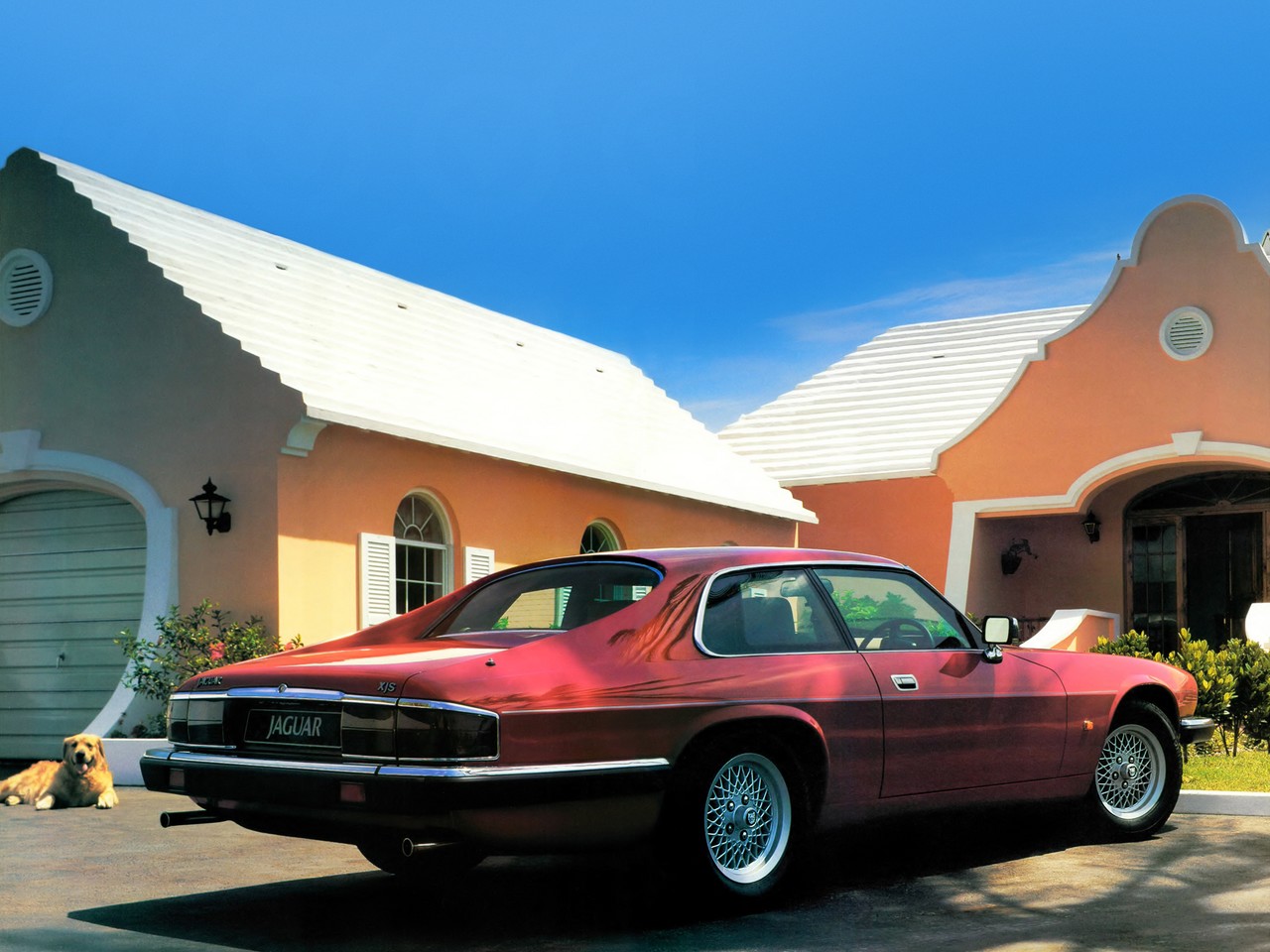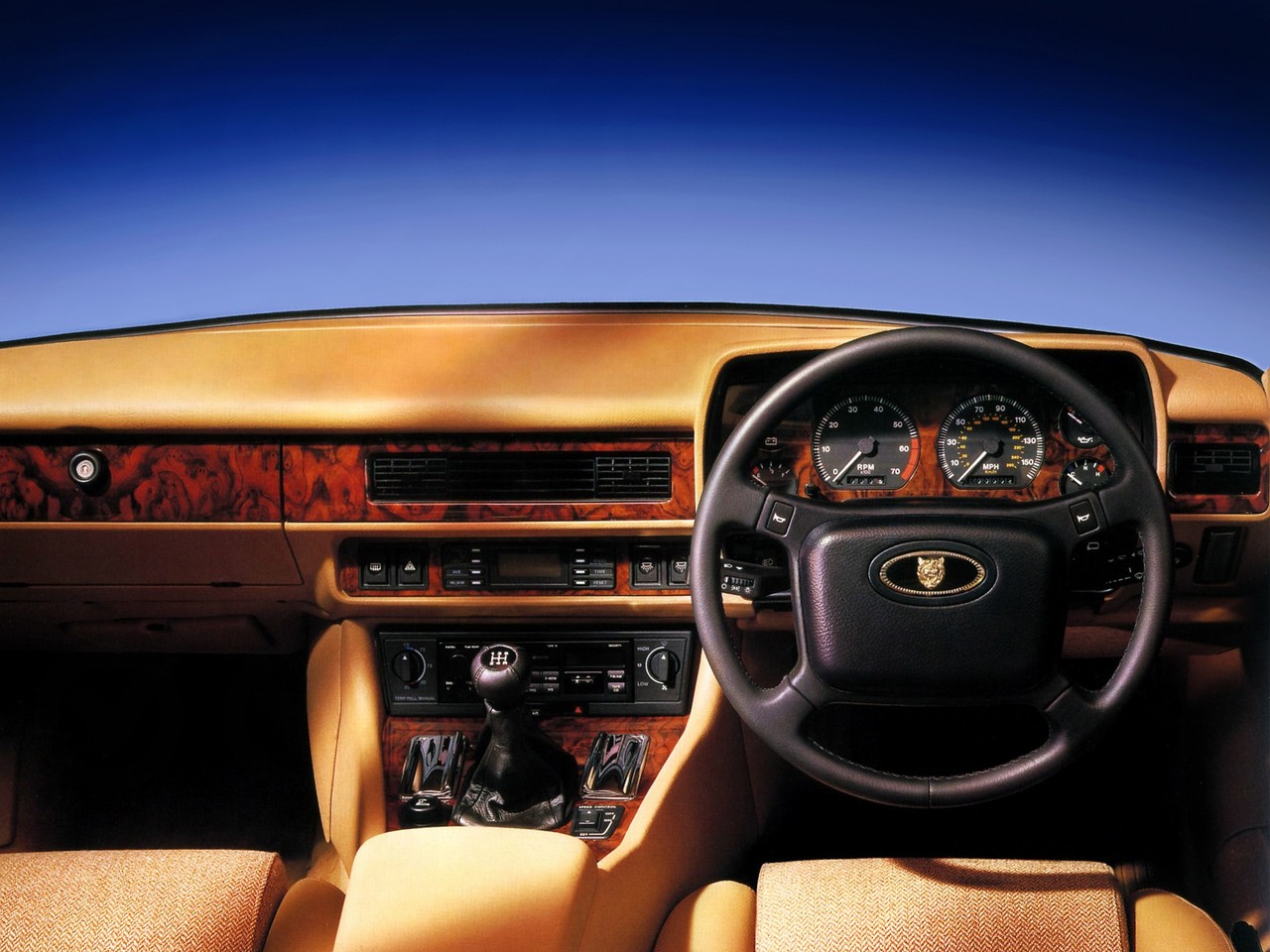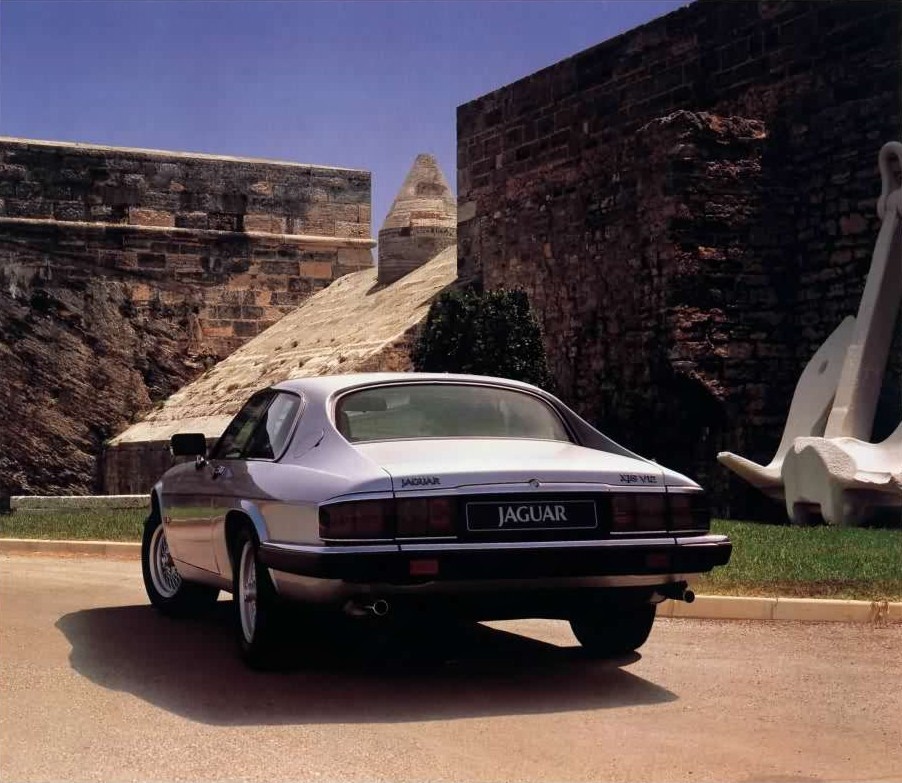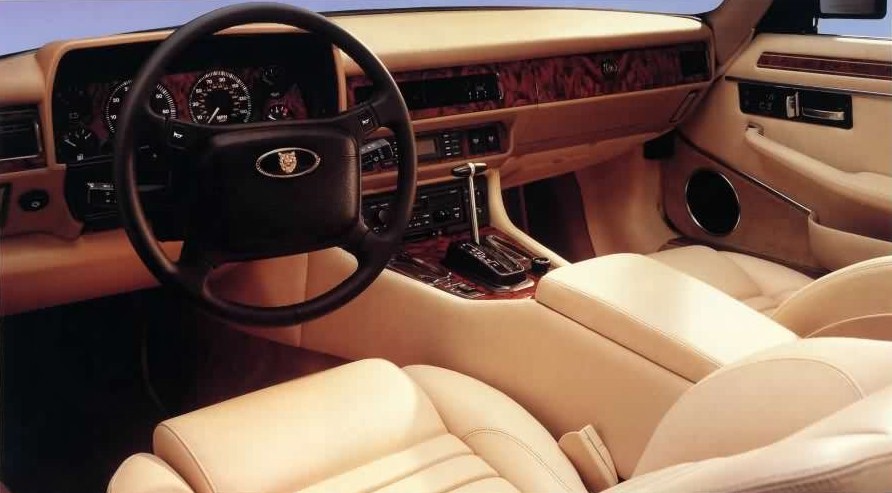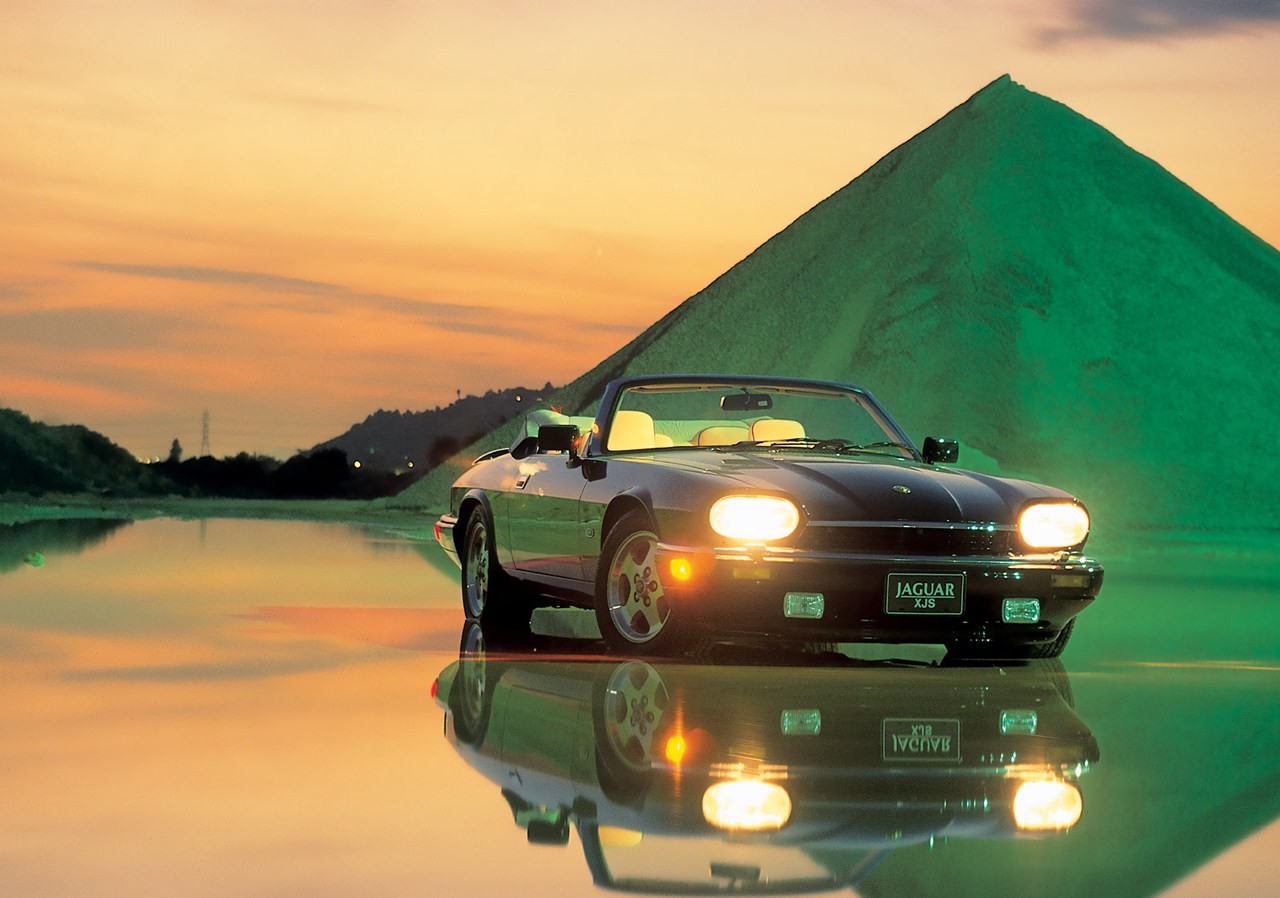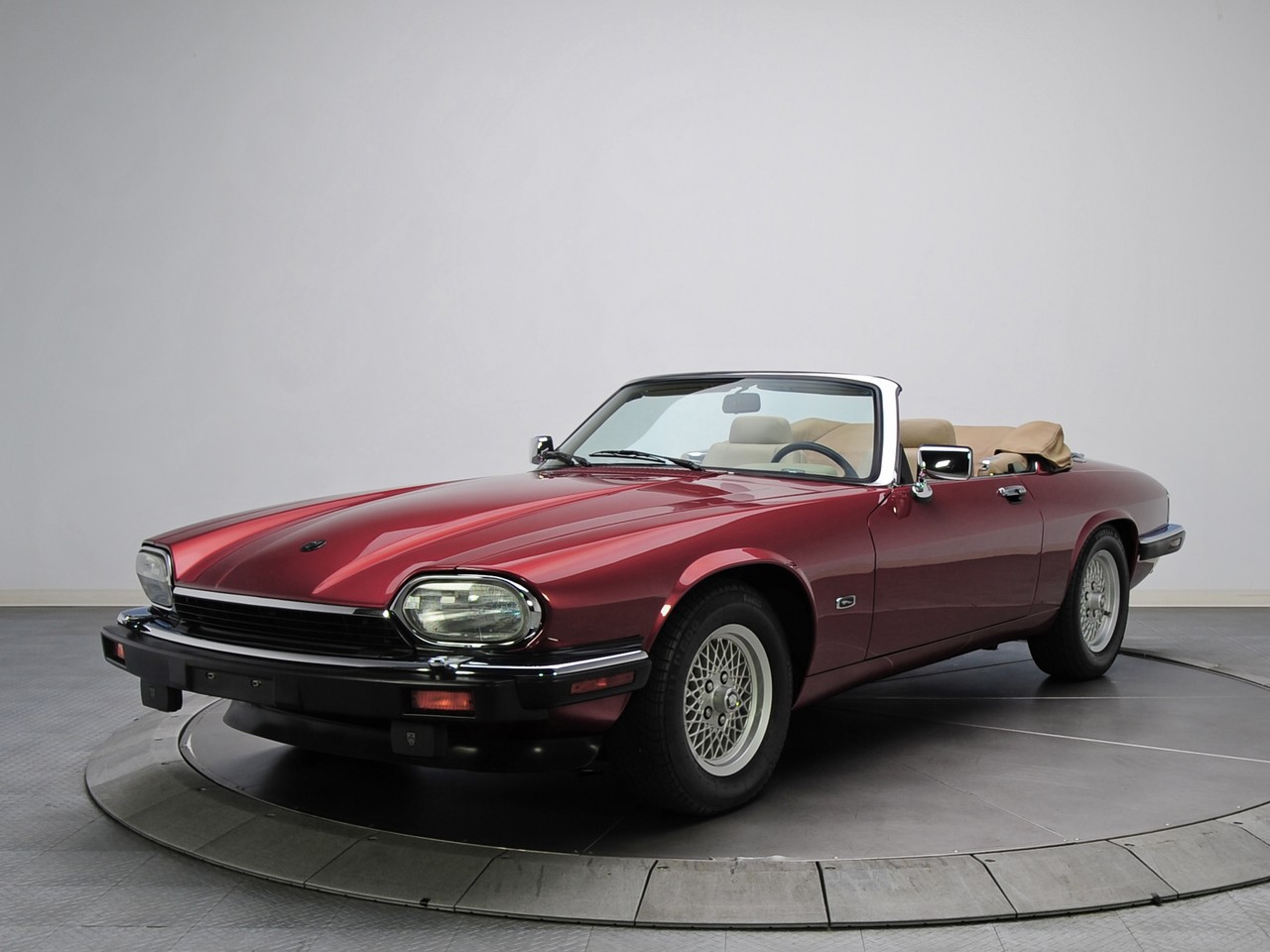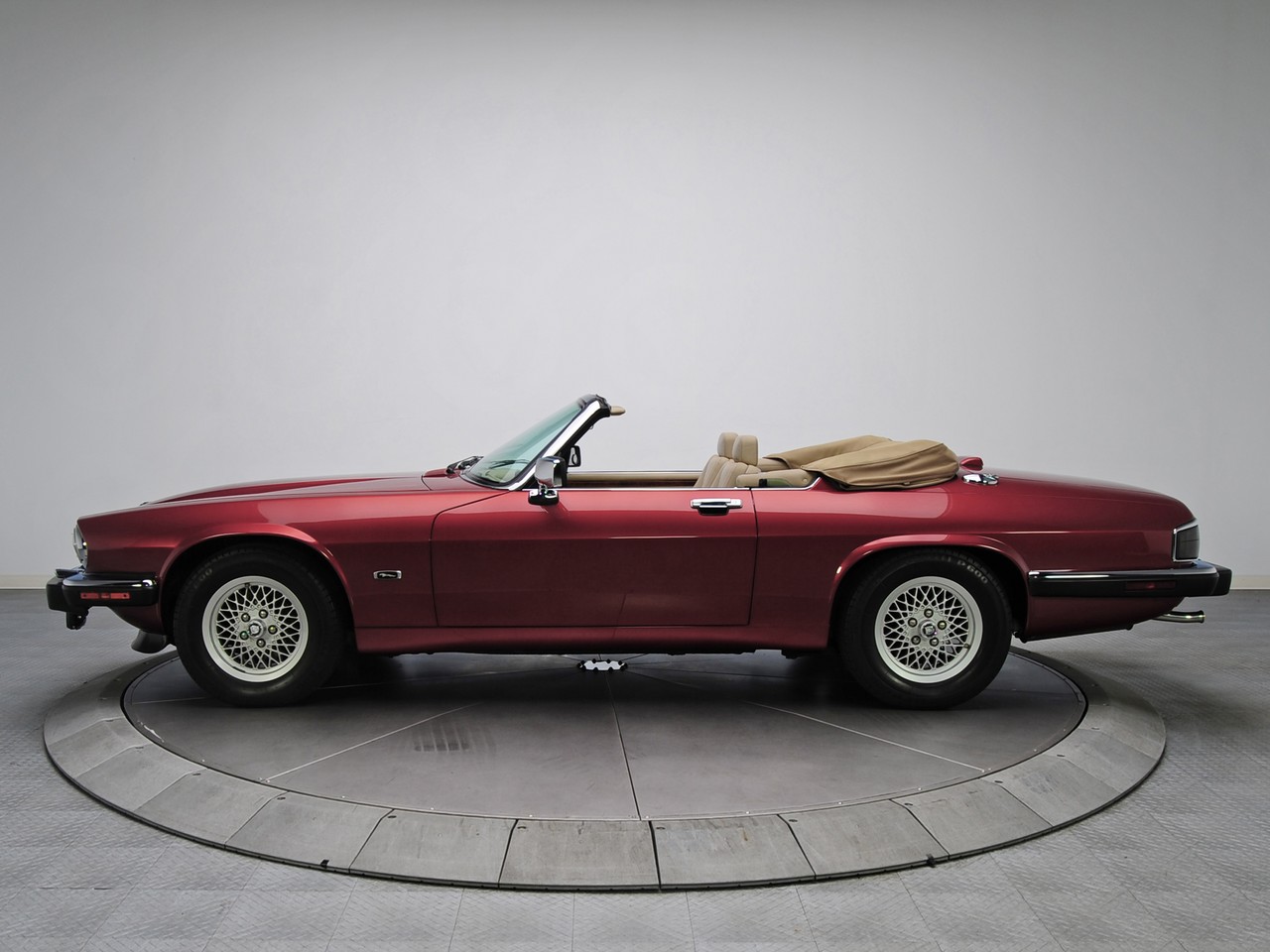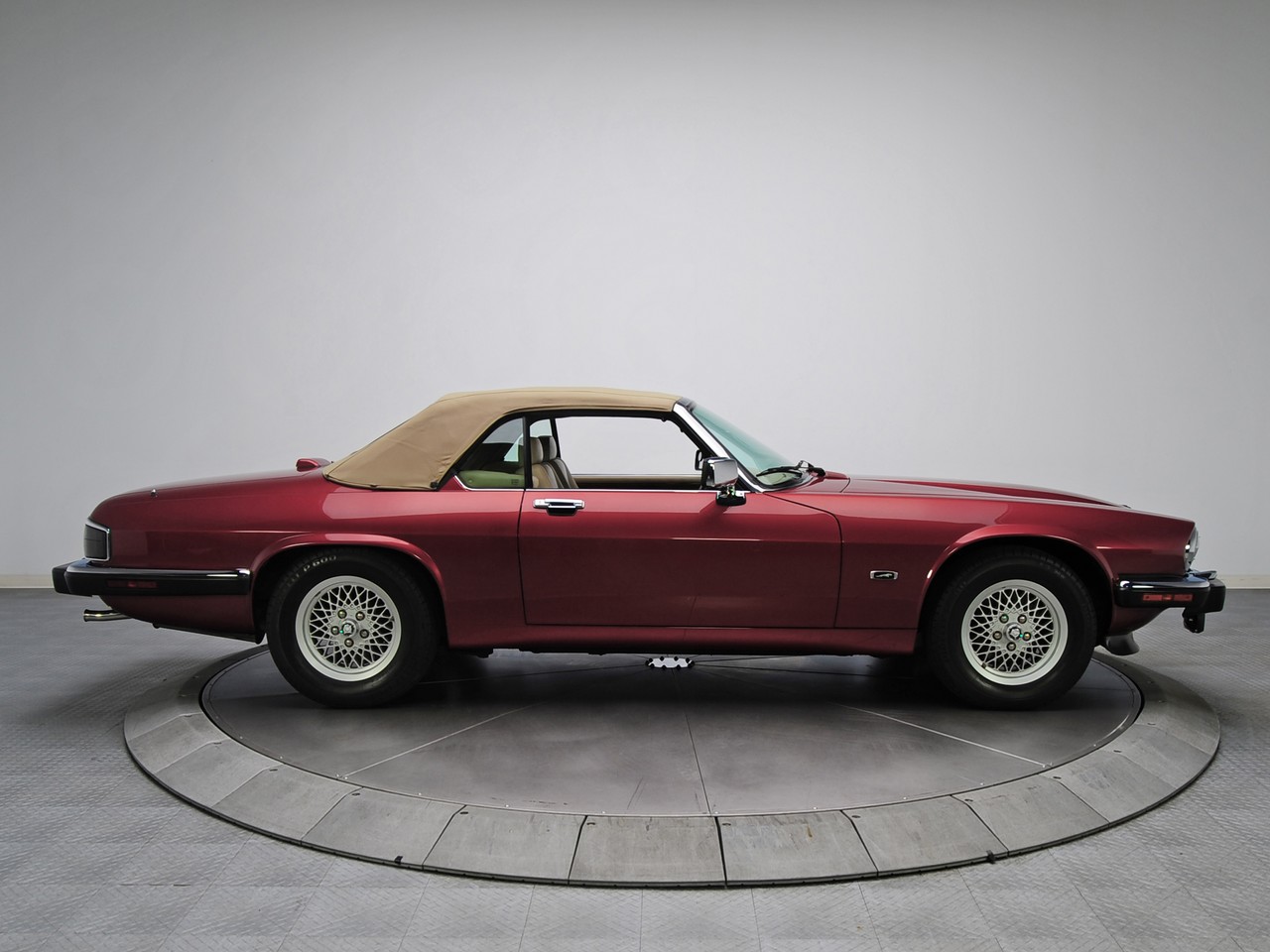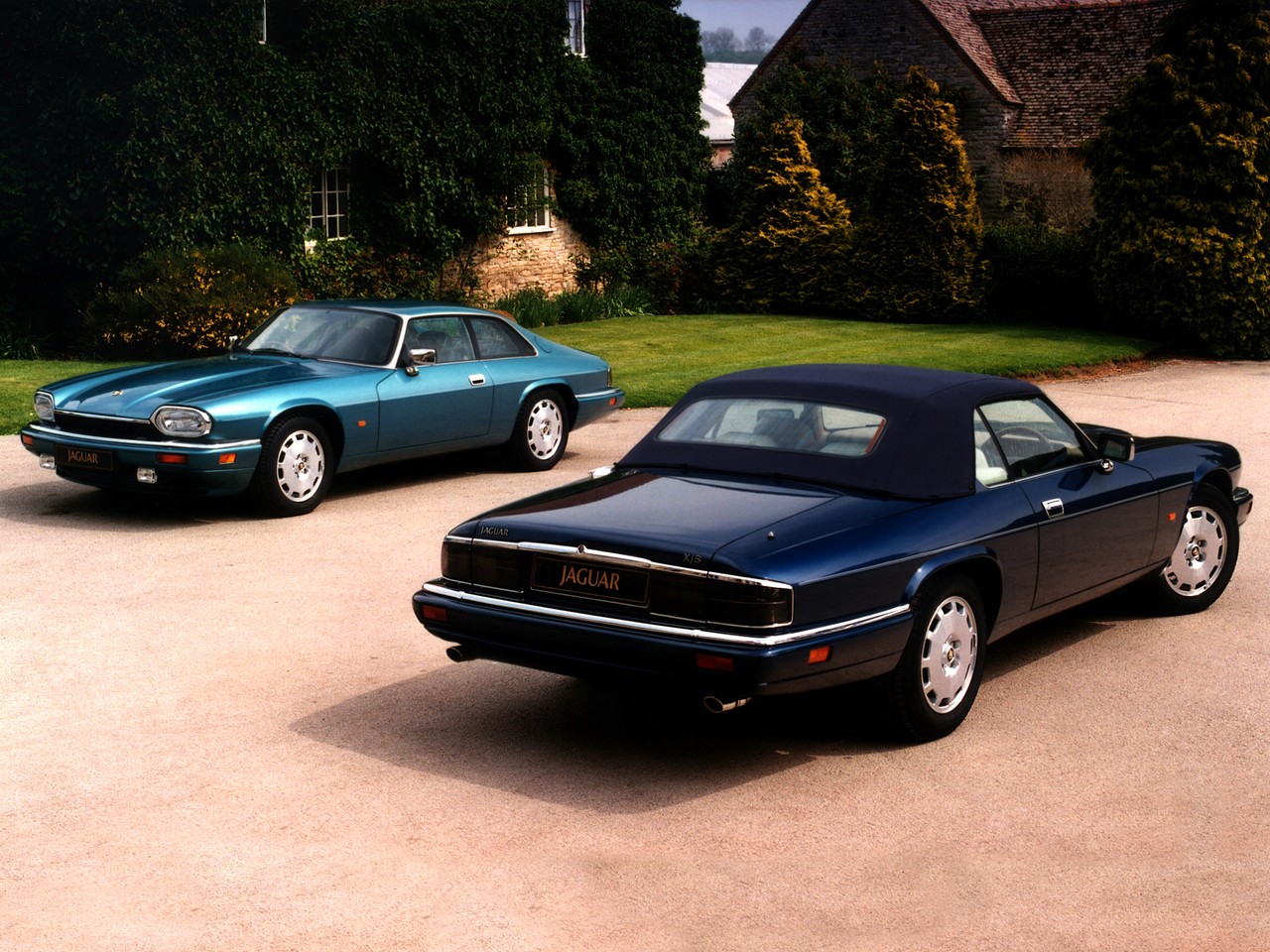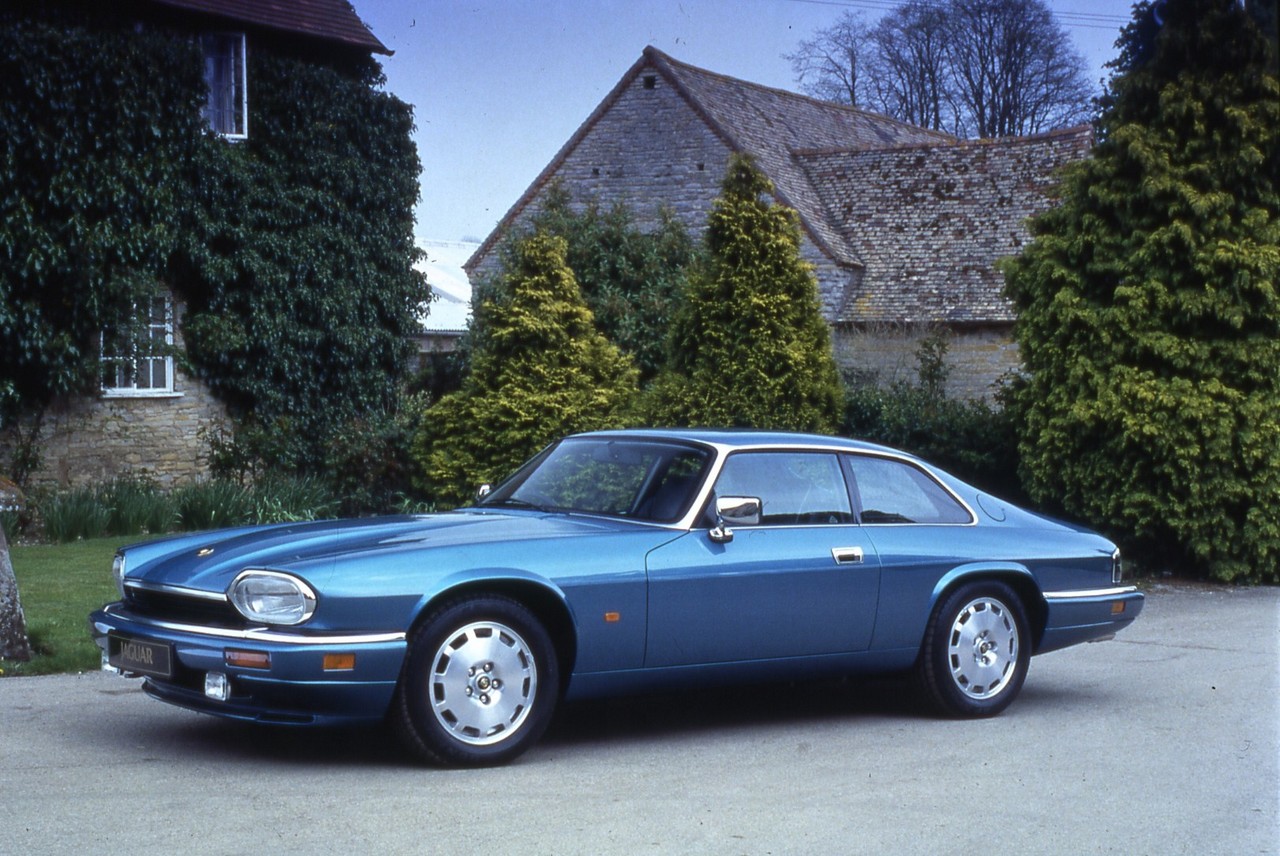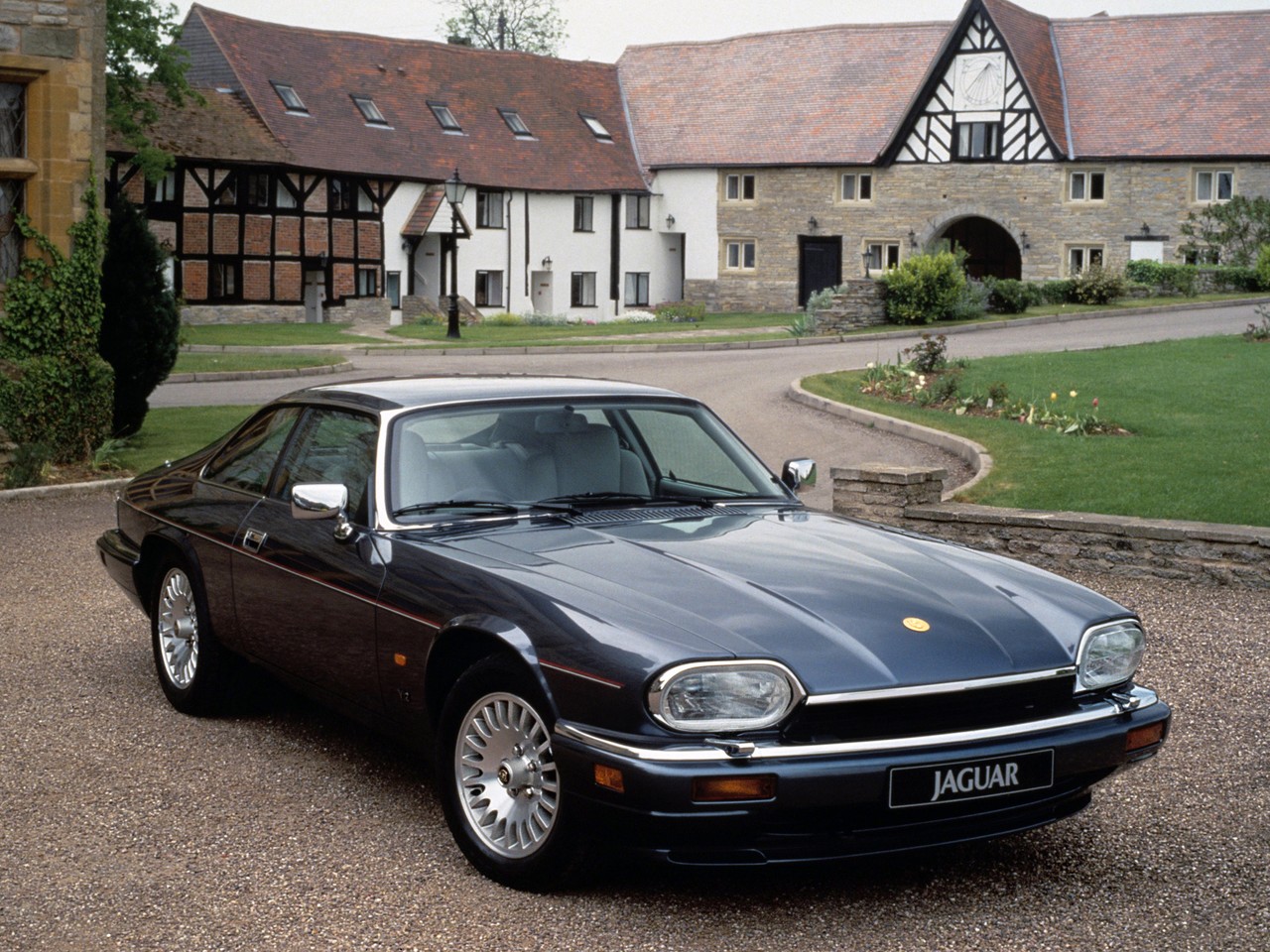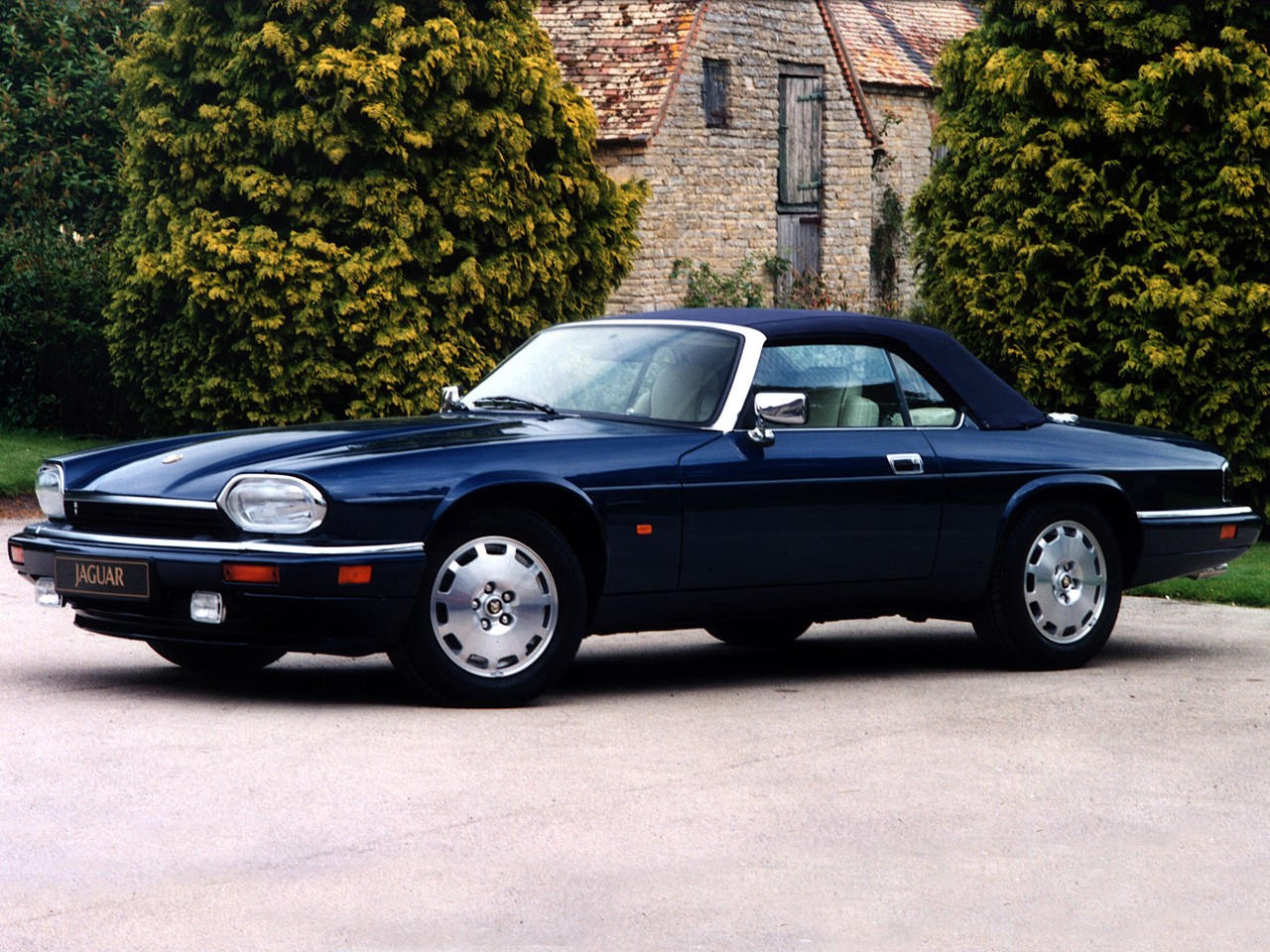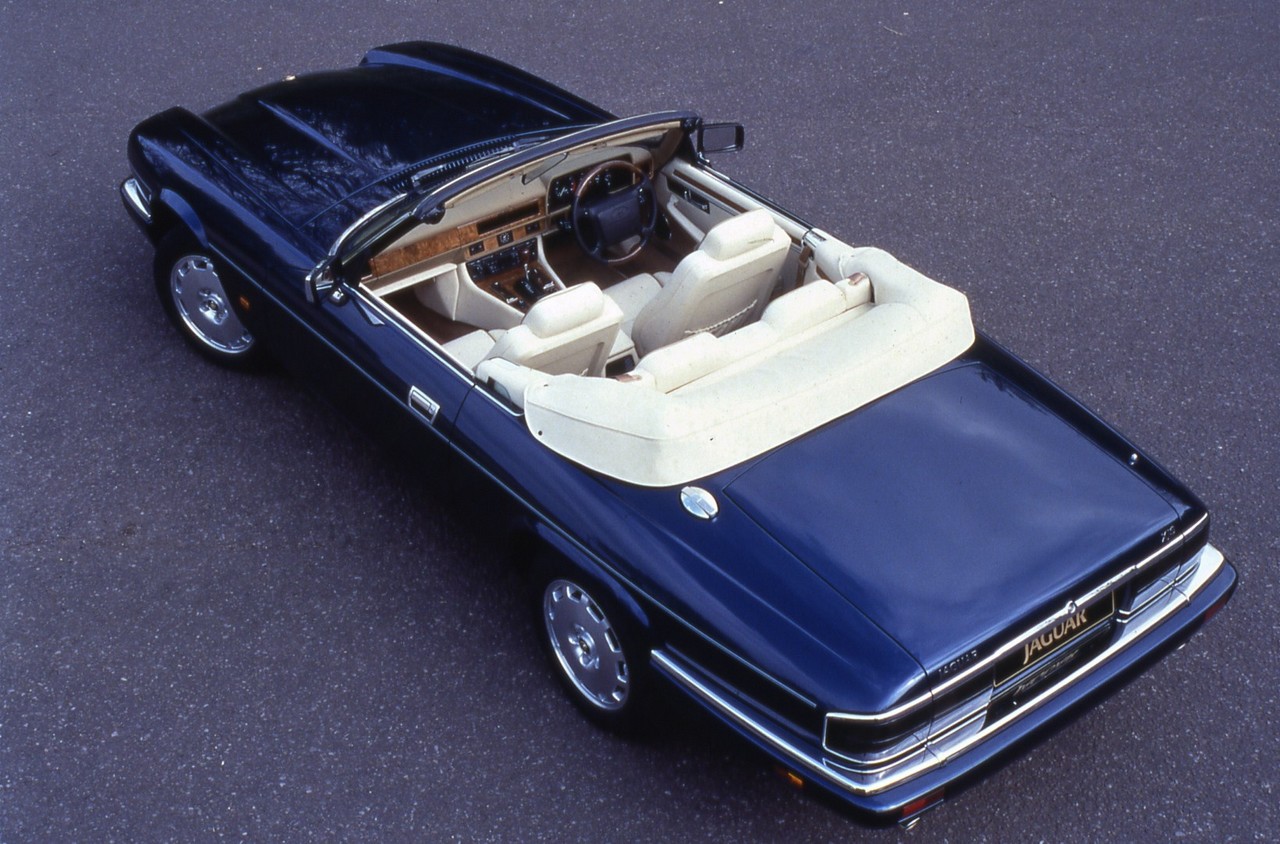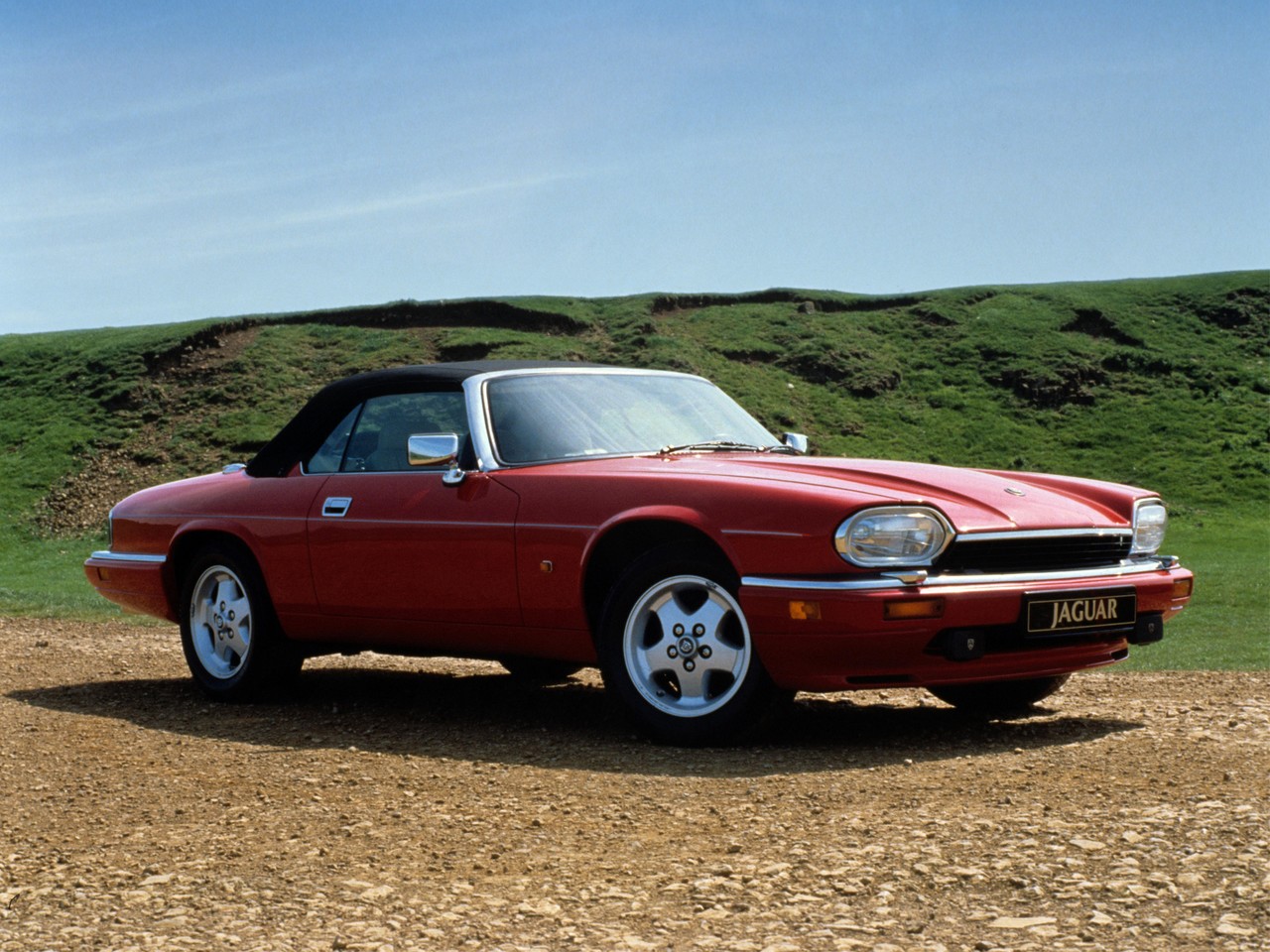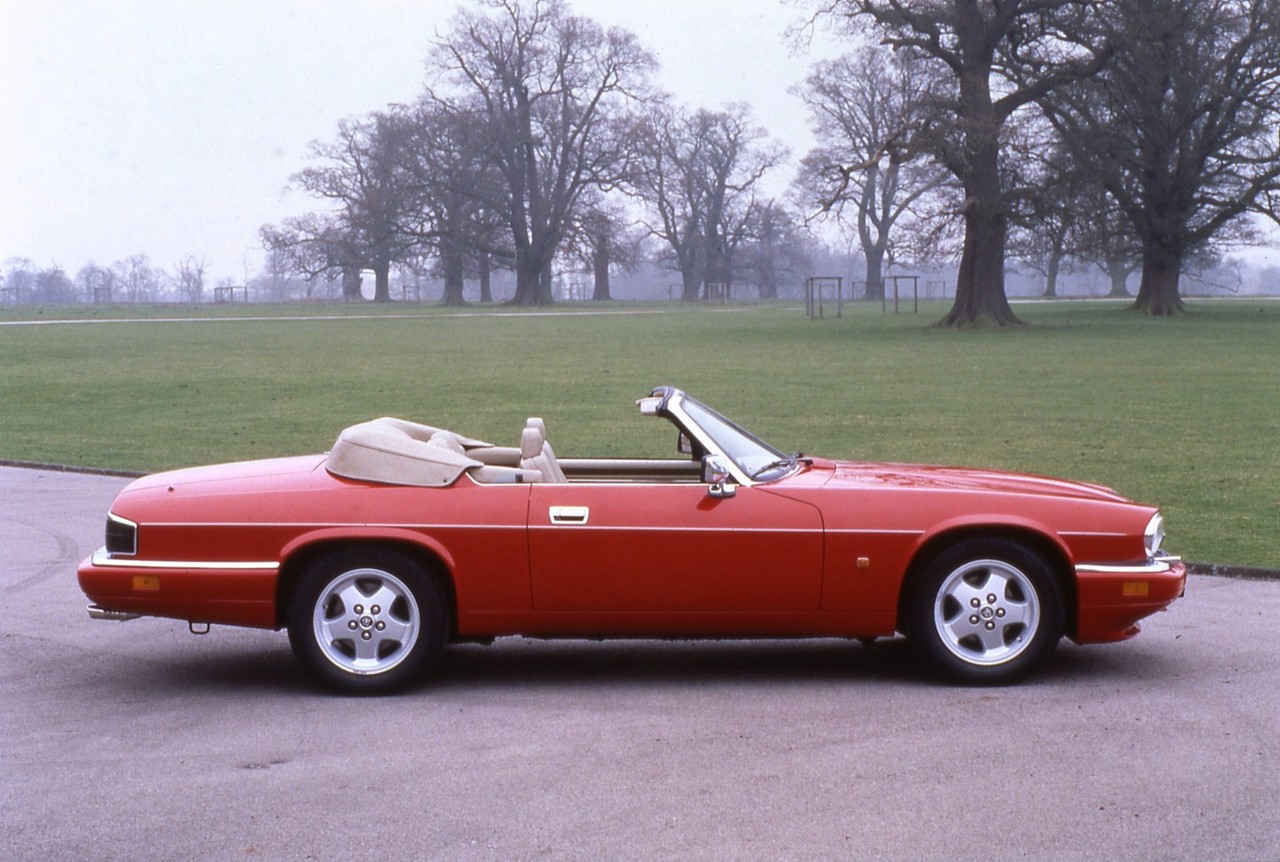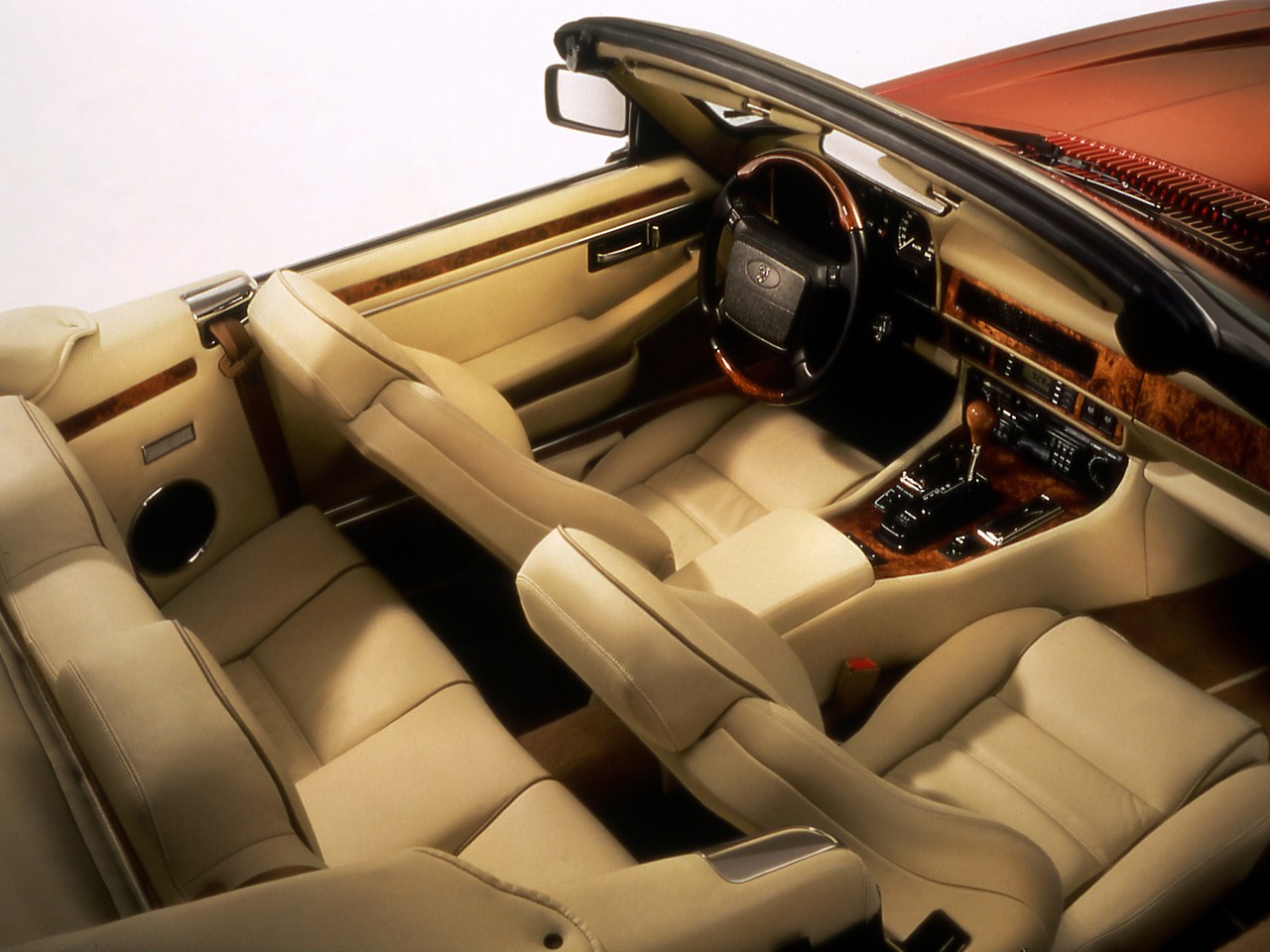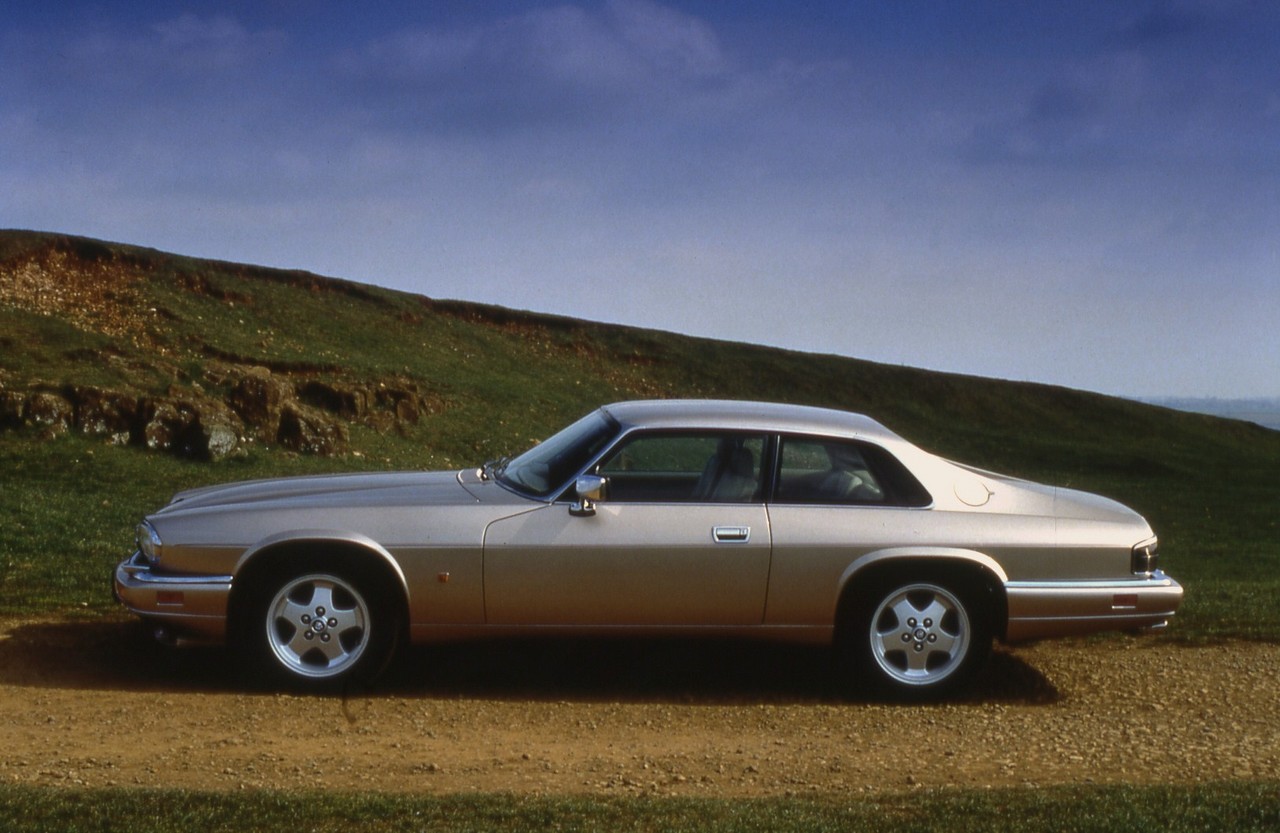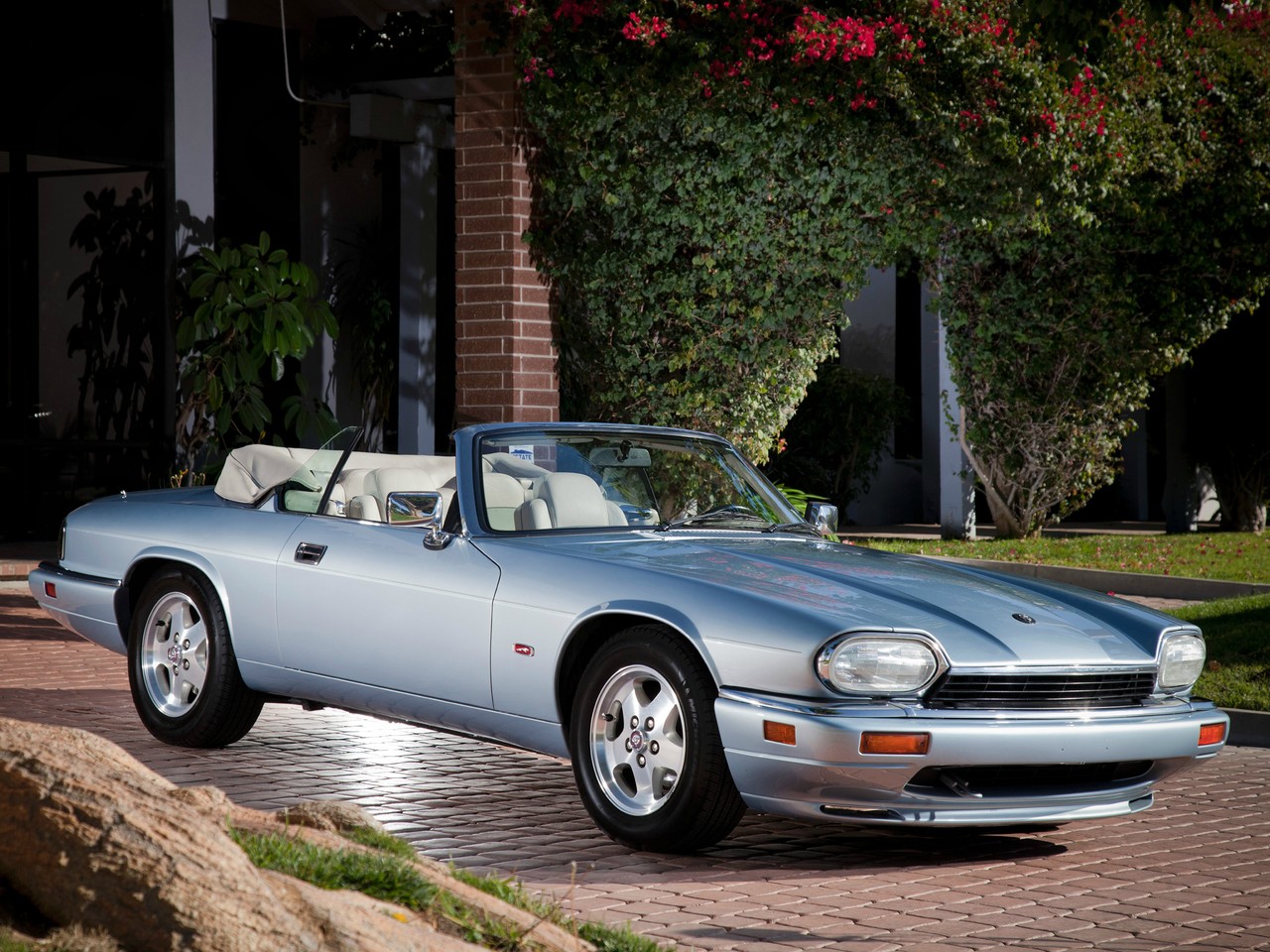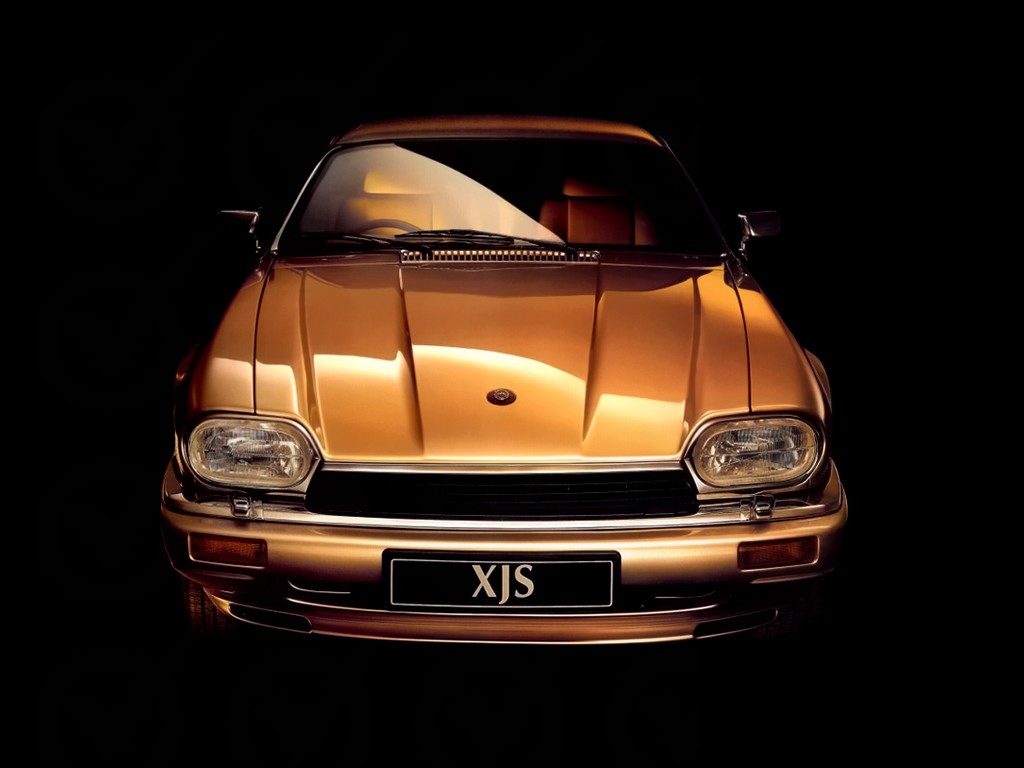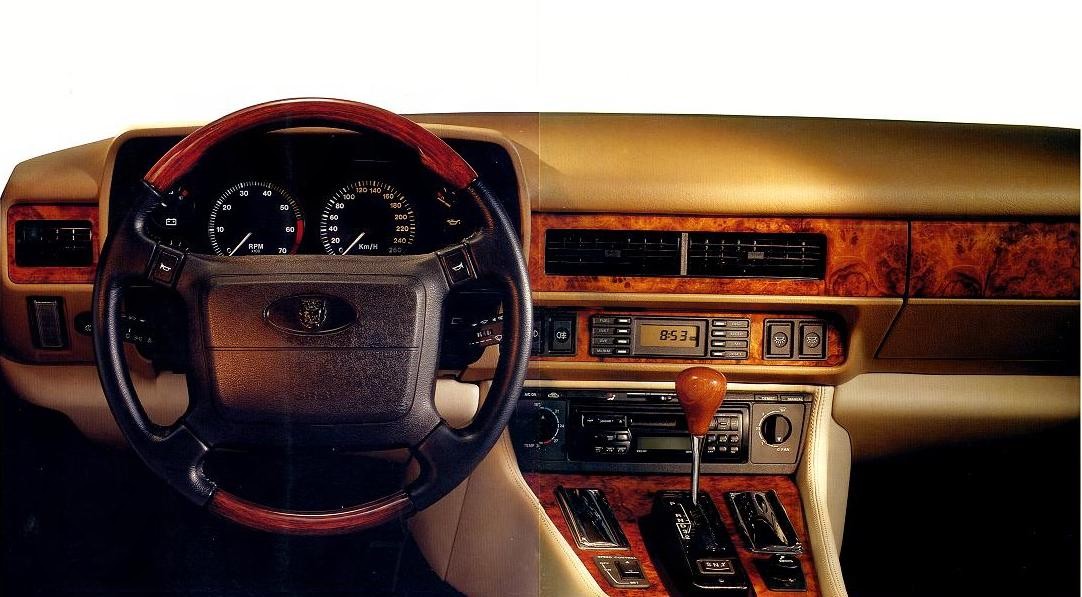
- Generally robust six-cylinder engines
- Supple ride
- High quality interior finishes
- Reliability concerns over 5.3-litre V12 engines
- Despite the long body, cramped interior
Review: Jaguar Series I XJS (1992-93)
Overview
Released in Australia in February 1992, the Jaguar Series I XJS was available as two-seat convertible or two-plus-two coupe. Manufactured in Coventry, England, the rear-wheel drive XJS was initially available with 4.0-litre inline six-cylinder and 5.3-litre V12 petrol engines, mated to four- or three-speed automatic transmissions respectively. Of the engines,
- The 4.0-litre AJ6 engine had an aluminum alloy block and cylinder head, double overhead camshafts, four valves per cylinder, Lucas electronic ignition and a compression ratio of 9.5:1. This engine was mated to a four-speed ZF 4HP24E transmission which had Normal and Sport operating modes; and,
- The hand-assembled 5.3-litre V12 engine had an aluminum alloy block and cylinder head, a single overhead camshaft (per cylinder head), two valves per cylinder, Marelli electronic ignition and a compression ratio of 11.5:1. This engine was mated to General Motors’ TH400 three-speed automatic transmission.
Compared to its XJ-S predecessor, the XJS could be identified by its slim-line radiator grille, body-coloured wiper grille, restyled framless tinted windows, redesigned buttresses and rectangular tail-lights’ inside, there were new instrument dials. The XJS also had a stiffer structure due to the addition of a cross-bracing strut beneath the engine bay.
The XJS coupe and convertible were 4764 mm long, 1793 mm wide, 1254 mm tall and had 2591 mm long wheelbases. For the convertible, the soft-top roof had catches at the windscreen edge which, when released, enabled the power-operated roof to be lowered in twelve seconds.
The XJS had double wishbone front suspension and independent rear suspension with lower transverse wishbones, radius arms and driveshafts acting as upper links. A limited slip differential was also fitted as standard.
| Engine | Years | Trans. | Peak power | Peak torque | |
|---|---|---|---|---|---|
| Convertible, Coupe |
4.0-litre petrol I6 | 1992-93 | 4sp auto | 166 kW at 4750 rpm | 377 Nm at 3650 rpm |
| 5.3-litre petrol V12 | 1992-93 | 3sp auto | 209 kW at 5500 rpm | 415 Nm at 2800 rpm |
Safety equipment
Standard safety equipment for the XJS consisted of ABS. A driver’s airbag was available as an extra-cost option.
Features
Standard features for the six-cylinder XJS models included 15-inch cast alloy wheels with 235/60 VR15 tyres, an RDS audio system with a radio and cassette player, herringbone tweed seat upholstery, power adjustable front seats, air conditioning, central locking, power mirrors and windows, a height adjustable steering wheel, trip computer, tinted windows, stainless steel tread plates and burr walnut veneers. Beyond this, the six-cylinder coupe models had firmer ‘sports’ damper settings, while the convertibles had leather-trimmed consoles and armrests.
Compared to the six-cylinder models, the V12 models were further equipped with leather seats, heated front seats with power adjustable lumbar support, cruise control, driver memory settings (for seat and door mirror positions), heated headlight washer jets, leather-trimmed console and armrests.
The V12 models were also available with an optional Sports Suspension System with increased spring rates, a larger front anti-roll bar and retuned dampers. Furthermore, power assistance was reduced to provide greater steering feel. Visually, these models could be identified by their 16-inch ‘lattice’ forged alloy wheels with 225/55 ZR16 P600 Pirelli tyres.
Review: Jaguar Series II XJS (1993-96)
Overview
Released in October 1993 for the 1994 ‘model year’, the Series II XJS introduced two-plus-two seat convertible bodies, upgrades for the six cylinder engines and a new 6.0-litre V12 petrol engine. The 1994 model year changes, however, were ‘phased-in’ such that they did not all coincide with the October 1993 release date. Of the engines,
- Changes for the 4.0-litre AJ6 engine included a new one-piece intake manifold, a revised camshaft cover (which incorporated the engine oil filler and a new gasket), improved exhaust gas recirculation system, revised rear mufflers for the rectangular exhaust finishers; and,
- The 6.0-litre V12 engine was based on the previous 5.3-litre unit but with an increased stroke of 78.5 mm (previously 70 mm). However, other changes included a low-restriction air intake system, new piston rings, modified camshaft profiles, shorter stem intake valves and compression ratio of 11.0:1. Furthermore, this engine was mated to General Motors’ 4L80-E four-speed automatic transmission which provided Normal and Sport operating modes.
Visually, the updated XJS could be identified by its body-coloured bumpers while the two-plus-two convertible bodies had a shortened rear window to allow the roof to fold behind the rear passenger seats. Furthermore, V12 models had body-coloured headlight surrounds, door mirrors and grilles, while a rear spoiler was also fitted as standard.
Inside, the 1994 model year XJS featured improved panel and trim fitment, an HFC-based climate control system, an injection-molded glovebox, an SAE standard cigar lighter with illuminated glow ring and front sun visors with interior lights and separate illuminated vanity mirrors.
Other changes for the XJS included:
- Greater refinement through improved joint seams and sealing, new front and rear floor panels with fewer seams, moulded sound insulation material and the introduction of metric-sized body fasteners;
- Improved corrosion resistance due to increased zinc coating of panels (to 60 per cent, previously 40 per cent), standardized weld studs and drilled holes eliminated or incorporated in panels during forming; and,
- For the suspension, revised spring rates and reduced diameter roll bars. The rear suspension was also redesigned to accommodate outboard disk brakes with new calipers (previously inboard discs).
July 1994: AJ16 engine
In July 1994, the 4.0-litre AJ6 engine was upgraded and redesignated AJ16. Changes for the AJ16 included a more rigid cylinder block casting, revised cylinder head, higher camshaft lift, new pistons and valves, modified intake and exhaust manifolds, a new throttle body and fuel injectors, coil-on-plug ignition, a higher compression ratio (10.0:1) and a new electronic engine management system.
| Engine | Years | Trans. | Peak power | Peak torque | |
|---|---|---|---|---|---|
| Convertible, Coupe |
4.0-litre petrol I6 (AJ6) | 1993-94 | 4sp auto | 166 kW at 4750 rpm | 377 Nm at 3650 rpm |
| 4.0-litre petrol I6 (AJ16) | 1994-96 | 4sp auto | 177 kW at 4700 rpm | 382 Nm at 4000 rpm | |
| 6.0-litre petrol V12 | 1993-94 | 4sp auto | 234 kW at 5400 rpm | 481 Nm at 2850 rpm |
Safety equipment
Standard safety equipment for the updated XJS was extended to include dual front airbags.
Features
Standard features for the XJS were extended to include Connolly leather seats, climate control air conditioning, heated headlight washer jets and an integrated security system.
The V12 models featured 16-inch ‘Diamond turned gold’ five-spoke alloy wheels with 225/60 ZR16 tyres (with a space-saving spare wheel) and Connolly Autolux leather seats in a four-panel design with ruched centre panels and contrasting piping.
July 1994 XJS: update
In July 1994, further improvements were introduced to coincide with the AJ16 engine. Inside, the post-July 1994 models featured an Alpine audio head unit with a detachable front panel, aluminium tread plates (previously stainless steel) and were pre-wired for a cellular phone. Coupe models also had front seats with stowage pouches on the lower cushion and thinner rear seats for greater interior space.
Visually, these models could be identified by their alloy wheels:
- Six-cylinder models received five-spoke 16-inch alloy wheels with a diamond-turned finish, the centre cap of the wheel featured a silver growler on a red background and the leaper badge on the bonnet had a matching red background; and,
- V12 models received twenty-spoke 16-inch alloy wheels with a diamond-turned finish, the centre cap had a gold-tone growler on black background and there were silver-toned V12 badges on the front fenders.
Both six- and twelve-cylinder models were fitted with 225/60 ZR16 Pirelli 4000E tyres.
For six cylinder models, standard features were extended to include variable (i.e. speed-sensitive) power steering assistance, though the trip computer was replaced with an analogue clock. The V12 models were also fitted with a six-disc CD changer as standard.
1995 XJS Celebration
In 1995, a limited-run of ‘Celebration’ XJS vehicles were released to commemorate sixty years of production. Solely available the six cylinder engines, the XJS Celebration models could be identified by their 16-inch ‘Aerosport’ diamond-turned alloy wheels, black front grilles, chromed exterior mirrors and rear number plate surrounds, new enameled bonnet badges and twin painted coachlines. Inside, the XJS Celebration models featured leather seats with contrast piping, embossed front seat head restraints, sapwood walnut veneers and a solid wooden gearknob.
Related links
